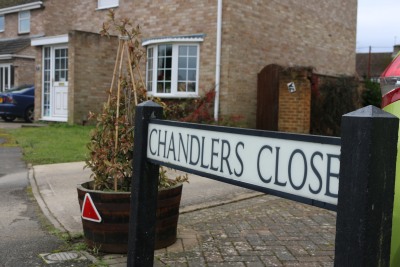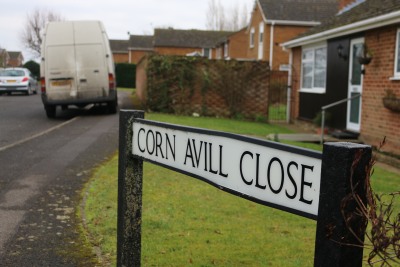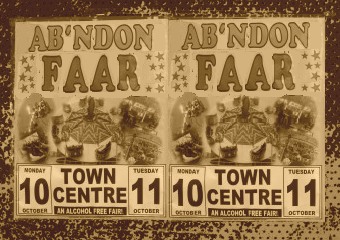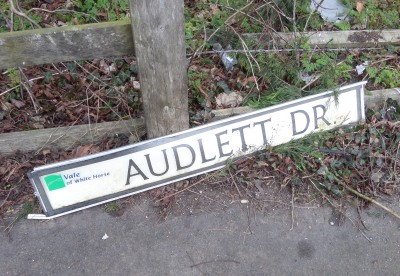
Near the end of Audlett Drive

you will find Barrow Hills Recreation Area, a place that has not seen much council investment in the last few decades. It has a rundown BMX Track featured in 2006 , an area for football, and a very uneven car park. The area is mostly used by dog walkers who can set out in the direction of Thrupp Lane.

One route passes through an area of very regular woodland with the exception of one bent tree,
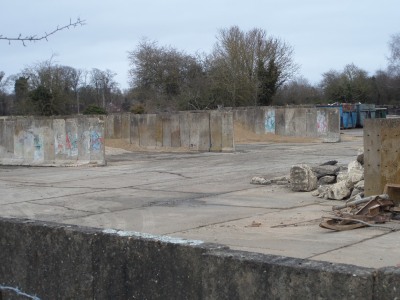
then across a field with some larger trees to the south, and then skirts an Old Coal Yard (in Radley Parish) just before Thrupp Lane. I am guessing that this was the local coal distribution centre run by the coal board.
I read in the History of Ock Street that T Enoch & Son, of 75 Ock Street, was the last coal merchant in Abingdon. They closed in the 1990s having operated for about 100 years. In the 1970s there were three coal merchants in Abingdon. Go back to the 1960s and most families would have a coal storage area, and took a regular delivery of coal.


